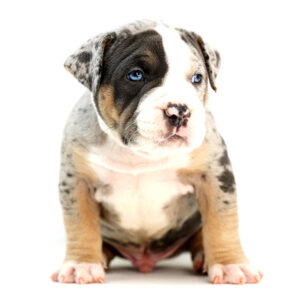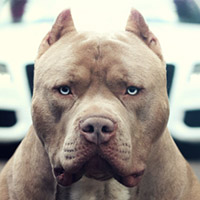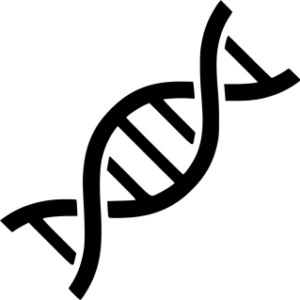TIPS
Information gathered in this "tips" section was taken from the APCA website. For more details, you can visit their website here.
GENERAL DOG CARE
A dog can be a wonderful addition to any home, but whether you're an experienced pet parent or a first-time adopter, it's important to keep your canine companion's health and happiness a top priority. Below are some useful tips for all dog parents.
Feeding
- Puppies eight to 12 weeks old need four meals a day.
- Feed puppies three to six months old three meals a day.
- Feed puppies six months to one year two meals a day.
- When your dog reaches his first birthday, one meal a day is usually enough.
- For some dogs, including larger canines or those prone to bloat, it's better to feed two smaller meals.
Premium-quality dry food provides a well-balanced diet for adult dogs and may be mixed with water, broth or canned food. Your dog may enjoy cottage cheese, cooked egg or fruits and vegetables, but these additions should not total more than ten percent of his daily food intake.
Puppies should be fed a high-quality, brand-name puppy food (large breed puppy foods for large breeds). Please limit "people food," however, because it can result in vitamin and mineral imbalances, bone and teeth problems and may cause very picky eating habits and obesity. Clean, fresh water should be available at all times, and be sure to wash food and water dishes frequently.
Exercise
Dogs need exercise to burn calories, stimulate their minds, and stay healthy. Individual exercise needs vary based on breed or breed mix, sex, age and level of health. Exercise also tends to help dogs avoid boredom, which can lead to destructive behaviors. Supervised fun and games will satisfy many of your pet's instinctual urges to dig, herd, chew, retrieve and chase.
Grooming
Help keep your dog clean and reduce shedding with frequent brushing. Check for fleas and ticks daily during warm weather. Most dogs don't need to be bathed more than a few times a year. Before bathing, comb or cut out all mats from the coat. Carefully rinse all soap out of the coat, or the dirt will stick to soap residue.
Handling
To carry a puppy or small dog, place one hand under the dog's chest, with either your forearm or other hand supporting the hind legs and rump. Never attempt to lift or grab your puppy or small dog by the forelegs, tail or back of the neck. If you do have to lift a large dog, lift from the underside, supporting his chest with one arm and his rear end with the other.
Housing
Your pet needs a warm, quiet place to rest, away from all drafts and off the floor. A training crate or dog bed is ideal, with a clean blanket or pillow placed inside. Wash the dog's bedding often. If your dog will be spending a lot of time outdoors, be sure she has access to shade and plenty of cool water in hot weather, and a warm, dry, covered shelter when it's cold.
Licensing and Identification
Follow your community’s licensing regulations. Be sure to attach the license to your dog’s collar. This, along with an ID tag and implanted microchip or tattoo, can help secure your dog’s return should she become lost.
Fleas and Ticks
Daily inspections of your dog for fleas and ticks during the warm seasons are important. Use a flea comb to find and remove fleas. There are several new methods of flea and tick control. Speak to your veterinarian about these and other options.
Medicines and Poisons
Never give your dog medication that has not been prescribed by a veterinarian. If you suspect that your animal has ingested a poisonous substance, call your veterinarian or the ASPCA Animal Poison Control Center for 24-hour animal poison information at (888) 426- 4435.
Vaccinations
Your dog may benefit from receiving a number of vaccinations.
Dog Supply Checklist
- Premium-quality dog food and treats
- Food dish
- Water bowl
- Toys, toys and more toys, including safe chew toys
- Brush & comb for grooming, including flea comb
- Collar with license and ID tag
- Leash
- Carrier (for smaller dogs)
- Training crate
- Dog bed or box with warm blanket or towel
- Dog toothbrush
The Scoop on Poop
Keep your dog on a leash when you are outside, unless you are in a secured, fenced-in area. If your dog defecates on a neighbor's lawn, the sidewalk or any other public place, please clean it up.
DOGS AND BABIES
When you bring a new baby home, your dog will face an overwhelming number of novel sights, sounds and smells. She may find some of them upsetting, especially if she didn’t have opportunities to spend time with children as a puppy. You’ll drastically alter your daily routine, so your dog’s schedule will change, too. And, out of necessity, she’ll get less of your time and attention. It may be a difficult time for her, especially if she’s been the “only child” for a while.
To make things go as smoothly as possible for everyone, it’s important to take some time to prepare your dog for the arrival of your new addition. In the months before the baby comes, you’ll focus on two things:
- Teaching your dog the skills she’ll need to interact safely with her new family member
- Helping your dog adjust to the many new experiences and changes ahead
Making a Plan
Your dog will benefit from any training you can accomplish before your baby’s birth.
Teaching Your Dog Important New Skills
Having good verbal control of your dog can really help when it comes to juggling her needs and the baby’s care. The following skills are particularly important.
Preparing Your Dog for Lifestyle Changes
Many dogs experience anxiety when their lifestyles are drastically altered. Although things will change with the arrival of your new baby, you can minimize your dog’s stress by gradually getting her used to these changes in advance.
Bringing the Baby Home
First impressions are important. Your dog should have pleasant experiences with your baby right from the start.
Preparing Your Dog for Life with a Toddler
Many dogs who haven’t spent time around children find toddlers confusing and intimidating. Some find them downright scary! Read on to learn about what you can do to influence the developing relationship between your dog and your growing child.
Teach Your Child to Respect Your Dog
As your child develops, teach him to respect your dog’s body, safe zones and belongings. Always supervise interactions so that you can guide your child as he learns to communicate and play with your dog appropriately. Playing an active role in the development of a relationship between your child and your dog will benefit everyone.
Teach Your Dog to Like Other Children
Your child will eventually want to have friends over to play, so it’s important for your dog to become comfortable with unfamiliar children.
DOG GROOMING TIPS
Have you ever watched your dog roll on the ground, lick her coat or chew at her fur? These are her ways of keeping clean. Sometimes, though, she’ll need a little help from you to look and smell her best. But don’t worry, we’re here to help. Read on for ways to keep your dog’s fur, skin, nails, teeth, ears and paws healthy and clean.
Bathing Your Dog
The ASPCA recommends bathing your dog at least once every three months, but some may require more frequent baths if he or she spends a lot of time outdoors or has skin problems. Here are some steps to help you get started.
Brushing Your Dog
Regular grooming with a brush or comb will help keep your pet's hair in good condition by removing dirt, spreading natural oils throughout her coat, preventing tangles and keeping her skin clean and irritant-free. Plus, grooming time is a great time to check for fleas and flea dirt—those little black specks that indicate your pet is playing host to a flea family.
Shedding
Although shedding old or damaged hair is a normal process for dogs, the amount and frequency of hair shed often depends upon their health, breed type and season. Many dogs develop thick coats in the winter that are then shed in the spring. Dogs who are always kept indoors, however, are prone to smaller fluctuations in coat thickness and tend to shed fairly evenly all year.
Skin Problems
Your dog’s skin is an indication of her overall health, so it’s important to keep it in prime shape. When a skin problem occurs, your dog may respond with excessive scratching, chewing and/or licking. A wide range of causes—including external parasites, infections, allergies, metabolic problems and stress, or a combination of these—may be to blame.
Dental Care
Regularly brushing your dog's teeth, along with a healthy diet and plenty of chew toys, can go a long way toward keeping her mouth healthy. Bacteria and plaque-forming foods can cause build-up on a dog's teeth. This can harden into tartar, potentially causing gingivitis, receding gums and tooth loss. Many pooches show signs of gum disease by the time they're four years old because they aren't provided with proper mouth care.
Eye Care
Giving your pup regular home eye exams will help keep you alert to any tearing, cloudiness or inflammation that may indicate a health problem. First, face your dog in a brightly lit area and look into his eyes. They should be clear and bright, and the area around the eyeball should be white. The pupils should be equal in size and there shouldn’t be tearing, discharge or any crust in the corners of his eyes. With your thumb, gently roll down your dog’s lower eyelid and look at the lining. It should be pink, not red or white.
Ear Care
Your dog’s regular grooming routine should include regular ear checks. This is especially important for dogs who produce excessive earwax or have a lot of inner-ear hair. Don’t clean your dog’s ears so frequently or deeply as to cause irritation, and take care to never insert anything into your dog’s ear canal—probing inside can cause trauma or infection!
Nail Care
As a rule of thumb, a dog’s nails should be trimmed when they just about touch the ground when he or she walks. If your pet’s nails are clicking or getting snagged on the floor, it’s time for a trim. For leisurely living dogs, this might mean weekly pedicures, while urban pooches who stalk rough city sidewalks can go longer between clippings.
Paw Care
The pads on the bottom of your pups feet provide extra cushioning to help protect bones and joints from shock, provide insulation against extreme weather, aid walking on rough ground and protect tissue deep within the paw. It’s important to check your pet’s feet regularly to make sure they’re free of wounds, infections or foreign objects that can become lodged.
COMMON DOG DISEASES
As a dog parent, it is important to recognize the signs and symptoms of common illnesses so you can seek veterinary help for your canine friend as soon as possible. Read on for information about diseases and other medical inflictions that frequently impact dogs.
Cancer
Finding out that a loved one has cancer can be very scary and confusing. When that loved one is your dog, it’s important to keep in mind that different veterinarians might have different views on the best way to treat the disease. It’s always a good idea to seek out a second opinion, perhaps from a veterinary oncologist, and carefully review your options.
Diabetes
Diabetes in dogs is a complex disease caused by either a lack of the hormone insulin or an inadequate response to insulin. After a dog eats, his digestive system breaks food into various components, including glucose—which is carried into his cells by insulin, a hormone secreted by the pancreas. When a dog does not produce insulin or cannot utilize it normally, his blood sugar levels elevate. The result is hyperglycemia, which, if left untreated, can cause many complicated health problems for a dog.
Heartworm
Heartworm is a parasitic worm that lives in the heart and pulmonary arteries of an infected animal. The worms travel through the bloodstream—harming arteries and vital organs as they go—ultimately completing their journey to the vessels of the lung and the heart chamber about six months after the initial infection. Several hundred worms can live in one dog for five to seven years.
Kennel Cough
Kennel cough is a term loosely used to describe a complex of respiratory infections—both viral and bacterial—that causes inflammation of a dog’s voice box and windpipe. It’s a form of bronchitis and is similar to a chest cold in humans.
Parvovirus
Canine parvovirus is a highly contagious viral disease that can produce life-threatening illness.
Rabies
Rabies is a viral disease that may affect the brain and spinal cord of all mammals, including cats, dogs and humans. This preventable disease has been reported in every state except Hawaii. There’s good reason that the very word “rabies” evokes fear in people—once symptoms appear, rabies is close to 100% fatal.
Ringworm
Although the name suggests otherwise, ringworm isn’t caused by a worm at all—but a fungus that can infect the skin, hair and nails. This highly contagious disease can lead to patchy areas of hair loss on a dog and can spread to other animals—and to humans, too.







